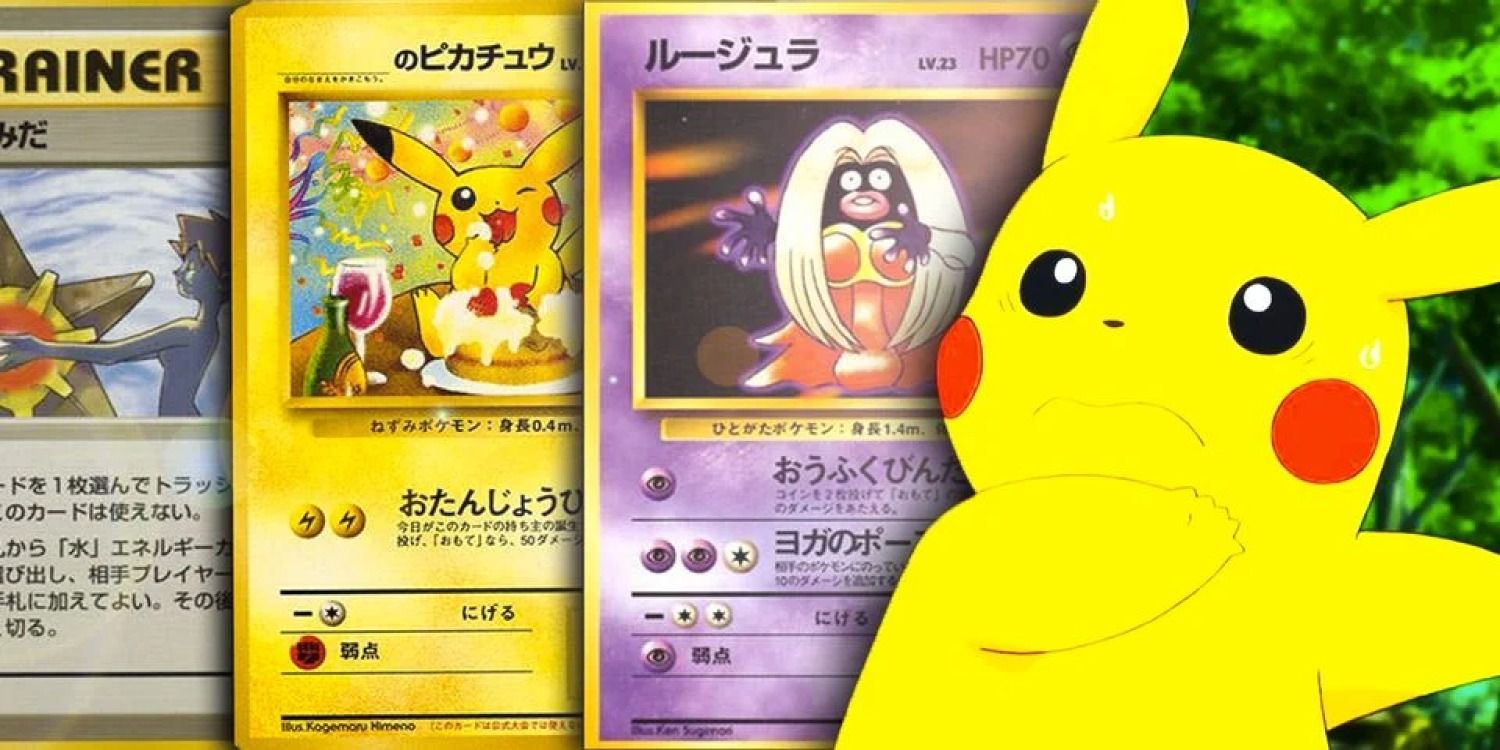
Trading card games can be a crazy juggling act of so many thousands of moving parts that some of those parts become a bit too powerful. When this happens, competitive communities usually remove various cards from the game because they just dominate too much or make competing less fun.
RELATED: Pokemon: 10 Beginner Tips If You're Just Starting The Card Game
The Pokemon TCG is no exception to this and has banned dozens of cards since it first came to prominence. Most of the time, cards were just too powerful but there are some more interesting cases in the game's long history. Cases of misprints, bad translations, weird rules that nobody wants to enforce and more all led to certain cards being banned.
10 _____'s Pikachu
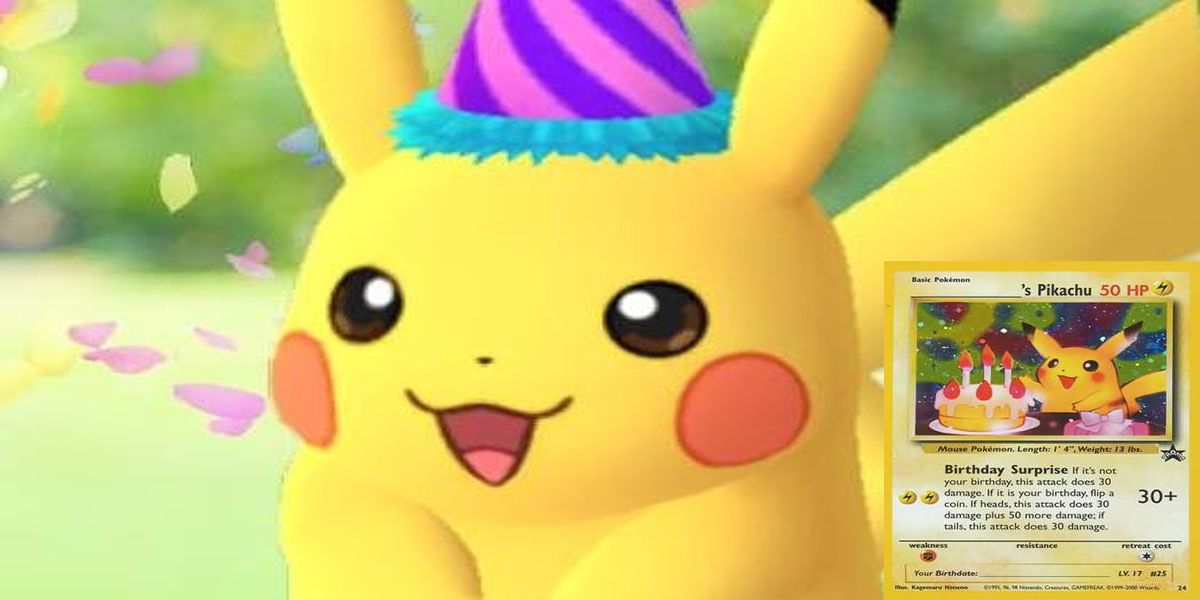
This card was a special event type of card that was supposed to make the player feel like the main character of their own Pokemon series. It had a special ability that was only active if it was the user's birthday. The ability, called Birthday Surprise, allowed for 50 more damage if they got a favorable coin flip.
The card was banned not just because of its strength, but also because of the implications it carried. In order to regulate the card, players would have to bring separate documentation to prove it was their birthday or not and that's just too much of a hassle.
9 Ancient Mew
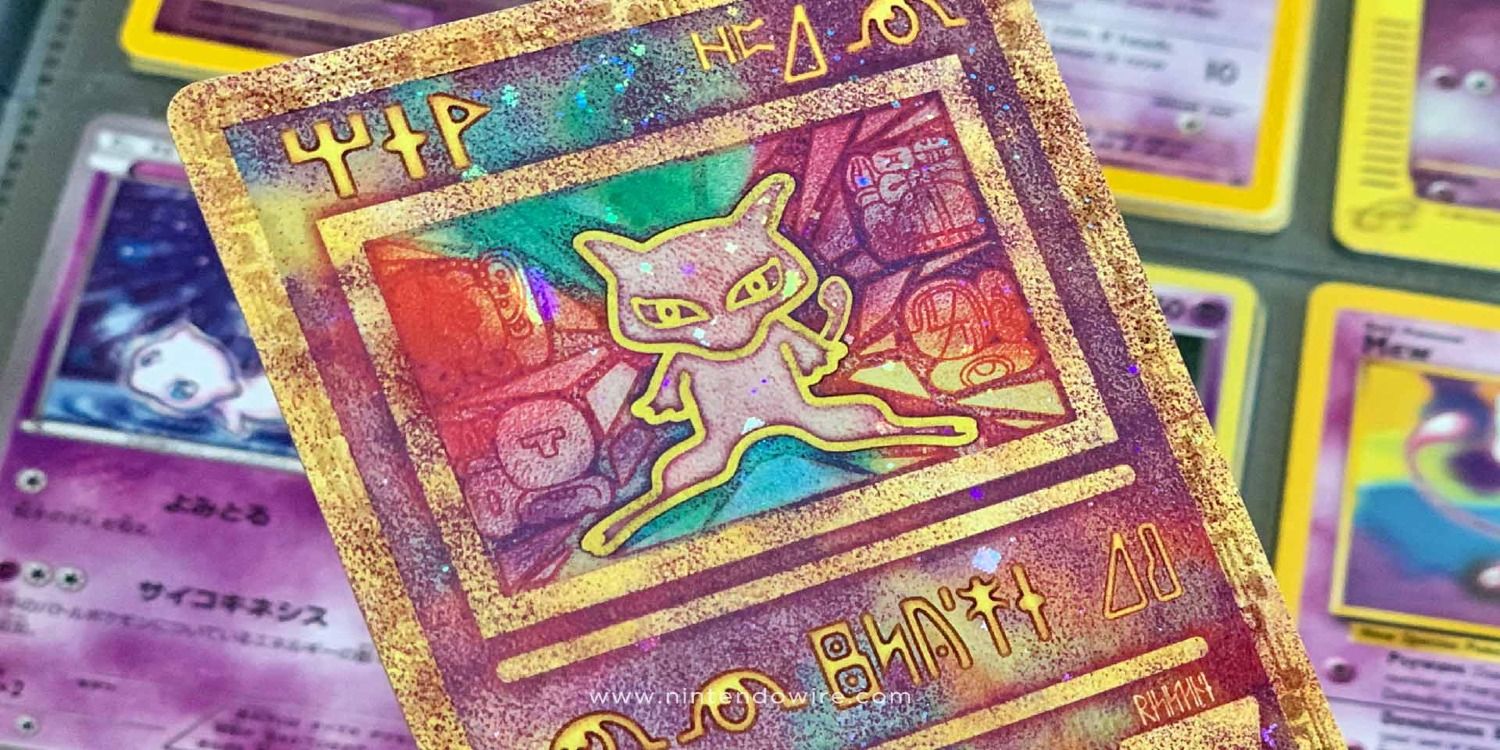
As one of the most powerful Pokemon depicted in the game at the time, Ancient Mew was a very cryptic card. This is because the card's text itself was written in unreadable runes that fans couldn't hope to understand. It's not uncommon to have cards written in other languages in trading card games, but this case was the exception.
The card was banned because so few people could interpret it, and it wasn't safe to have in play since someone could just claim to understand what it says and do what they want. It was a strange choice to write the description in such a cryptic way, but it definitely looks cool.
8 Wormadam

This case is extremely strange because it doesn't even apply to normal TCG rules or tournament regulations for Pokemon. This case specifically applies to the Professors. For context, the professors are essentially the referees who oversee Pokemon tournaments and events. In 2002, Nintendo hosted a Professor's Cup in honor of them and as thanks for their hard work.
The special rules for this tournament included one that said no cards above the uncommon rarity could be played. This standardized a lot of the decks and tactics to keep things exciting. Wormadam was one of the uncommon cards that was banned however, because it was "too powerful for its rarity".
7 Tropical Beach
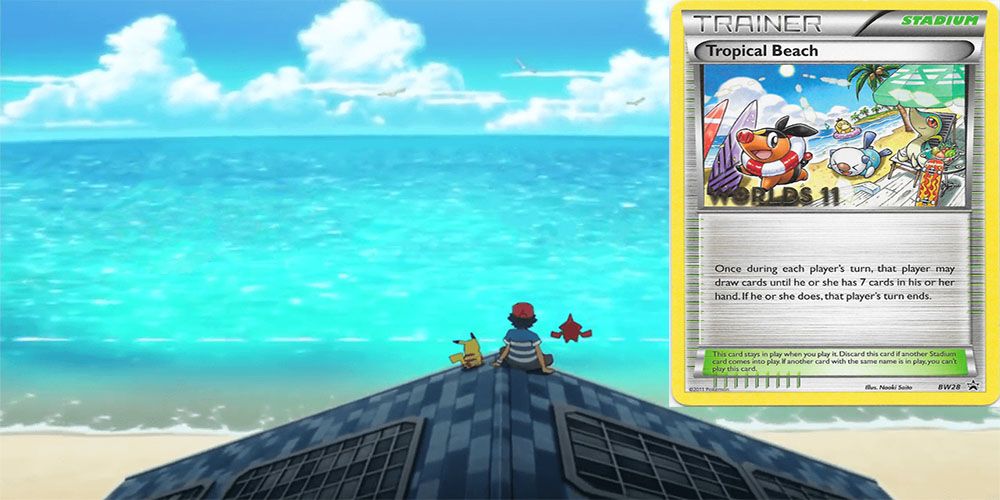
It's pretty common to see cards banned for being too powerful, and in other cases it's common for cards to be banned due to misprints or vague abilities. The case of Tropical Beach is a strange one because it was banned mostly for being too rare. The card was very powerful since it let the user draw until they had 7 cards in their hand, stacking their hand for the next turn.
RELATED: The Most Expensive Pokemon Cards Ever Sold At Auction
This ability is great but not necessarily broken. The reason it got the ban hammer was because it was only given to certain players who placed during specific tournaments. Not only was the card very powerful, but few players could get their hands on the promo card. Only Japan banned the card and it saw legal play in most other regions.
6 Slowking
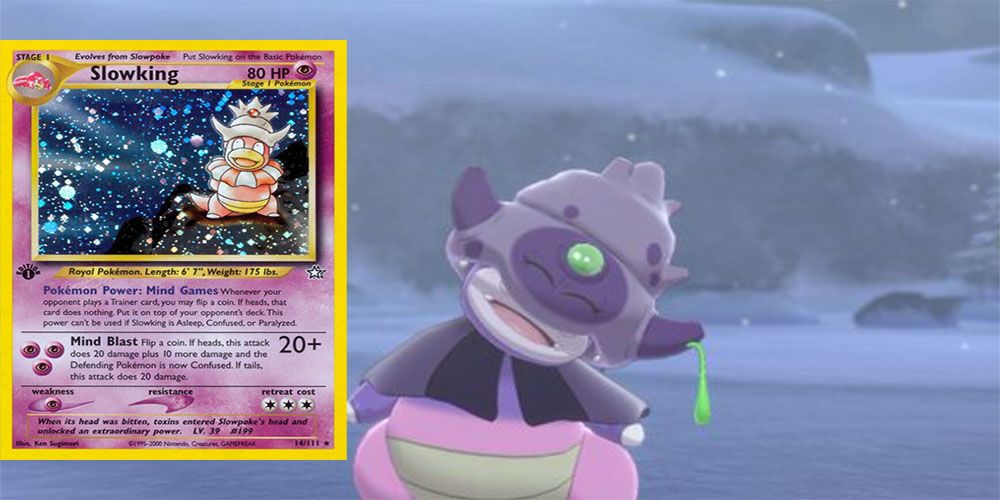
Translation is a difficult process that is extremely important to get right in competitive games. Slowking was a great example of what can go wrong if localization is a little off and how it affects a card's strength. Slowking's ability was that when it is the active Pokemon on a team, it would allow the player to flip a coin. If they got heads, then they could nullify the trainer ability of an opponent when they played them.
The localization error was that in the English version, Slowking didn't have to be active. This meant players could stack their bench with Slowkings and nullify every ability as long as they had good luck with coin flips. It's pretty obvious why that one needed to be banned.
5 Lysandre's Trump Card
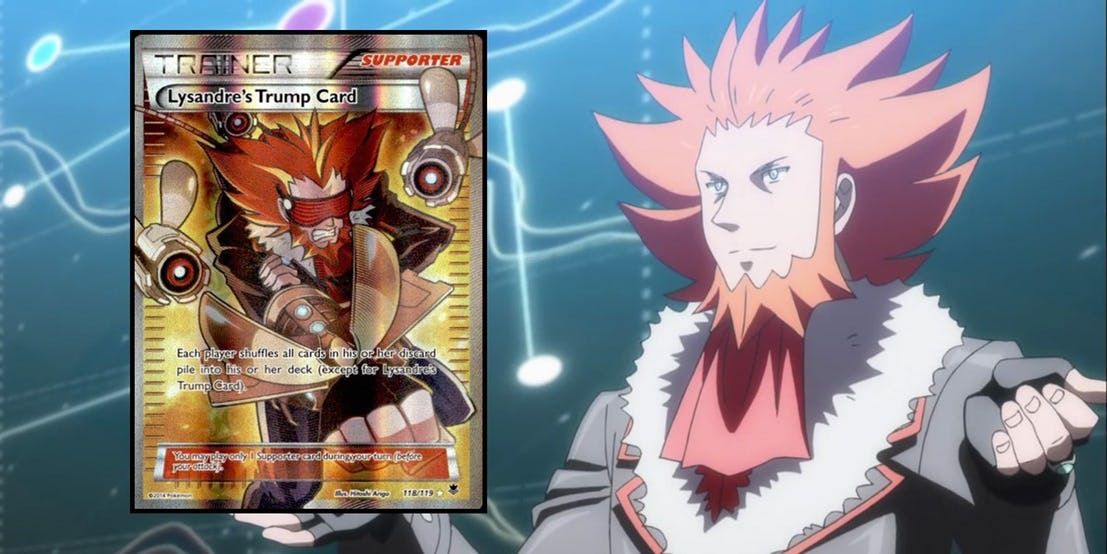
For a card to be very powerful, most players imagine a card that deals a lot of damage or stops an opponent from having their way during their turn. There's another strategy seen in competitive card games that's been around forever though. That ability is to stall the game. Lysandre's Trump Card does just this for the player.
RELATED: Pokemon: 10 Strongest Tag Team Cards, Ranked
When played, users can shuffle their discard pile into their deck and continue the match. This means with a few copies in a deck, it becomes extremely difficult to run out of cards, making stalling a viable strategy. If a player can play defensively enough to make their opponent run out of cards, they win and also drag the game out for what feels like forever. This card had to be banned since it just was too good at an underrated strategy.
4 Blaine's Quiz Show
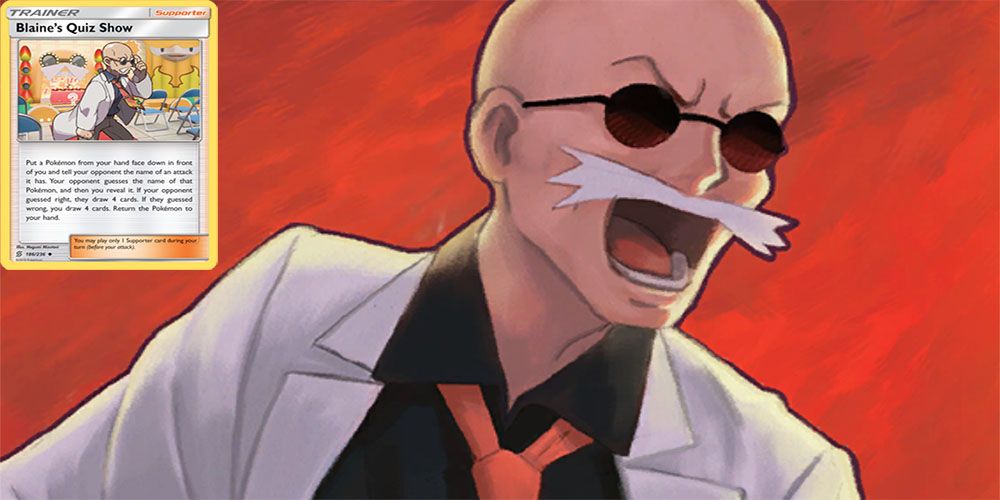
This card was a fun idea mixed with poor execution and game sense all in one. Blaine's Quiz Show was a trainer card that allowed its player to place a Pokemon card face down, and tell their opponent an attack it had. If the opponent guessed the Pokemon right, they could draw 4, if they were wrong the player could draw 4.
In a normal setting, there're no issues here but during an international event where players might not speak the same language, it gets dicey. Because of this, the card was banned from National events to help prevent issues.
3 Jynx
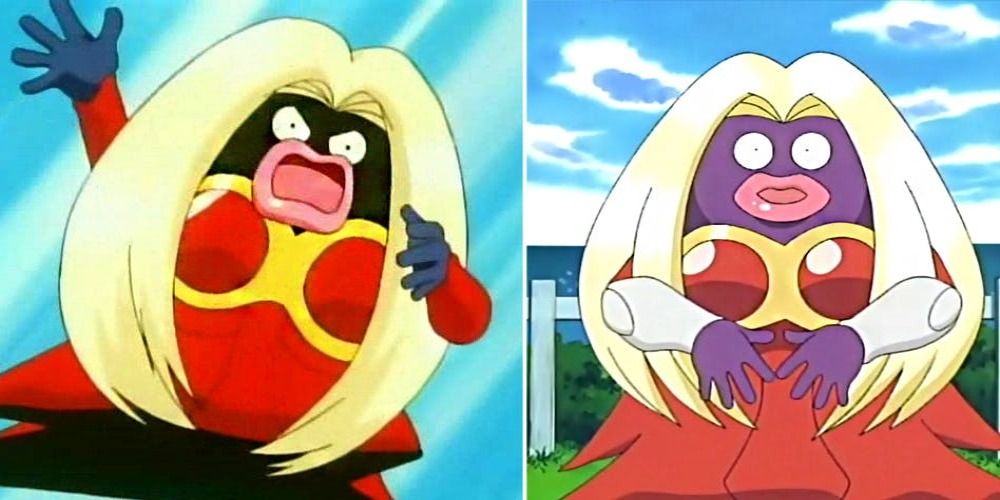
While Jynx cards aren't banned from competitive play, a lot were banned from being reprinted and spread to fans. This is because of the issues surrounding the Pokemon's initial design that remains a topic of conversation. Luckily, The Pokemon Company resolved this by changing Jynx's depiction amidst the controversy.
RELATED: 10 Jaw Dropping Painted Pokemon Cards That Are Better Than The Originals
Jynx's depiction in the anime was at the center of harsh criticism directed towards the franchise, so it was definitely in their best interest to change it.
2 Imakuni Cards
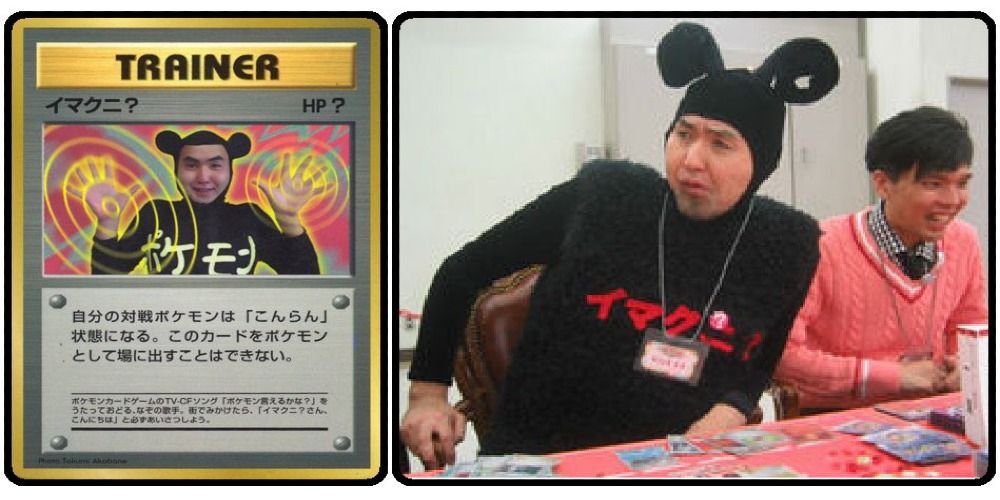
Imakuni cards are more or less easter egg promo cards for fans to enjoy outside of competitive environments. The cards themselves say they're not for competitive play so they ban themselves essentially. What's strange about this is that most of the cards are actually pretty fair and viable for competitive play.
They could be banned due to their rarity and the fact that they're not reprinted often, but they fit in the game just fine. Imakuni is a composer of some of the music in the Pokemon anime who shows his love for the franchise in these cards. The game could have a pretty funny tone if someone were to make a deck centered around viable Imakuni cards, but that was never meant to be.
1 Reset Stamp
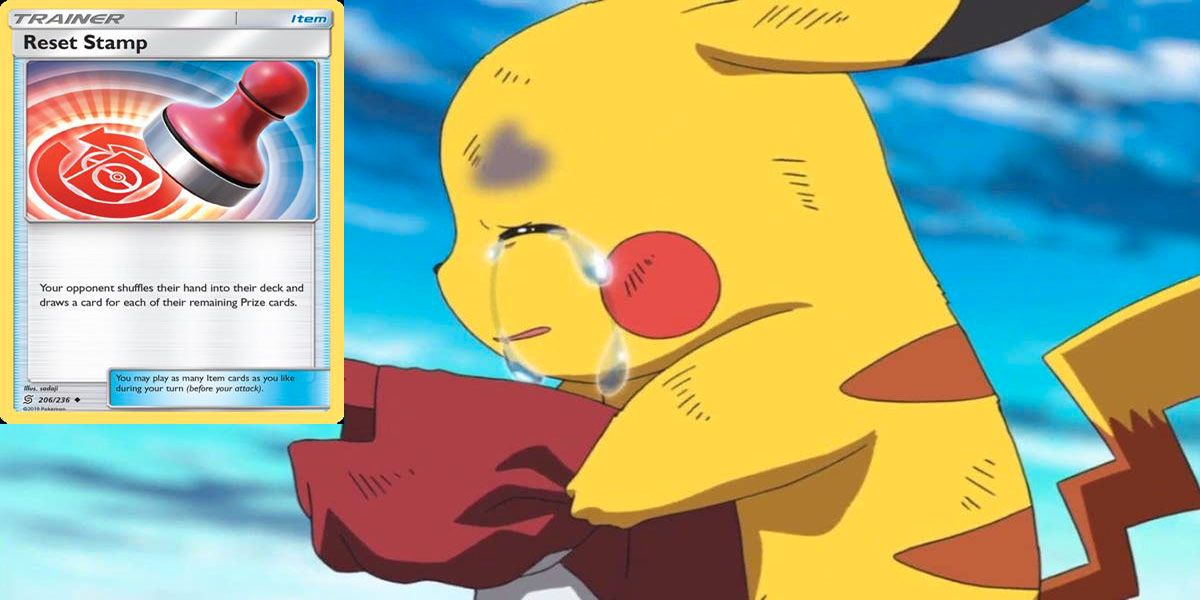
Cards are usually banned due to their ability to create an unbreakable combo, dictating the pace of the game too much, or just generally being unfair in the eyes of the community. Reset Stamp doesn't fit any of those categories really, and yet it received a ban in the Japanese community in 2019. There was no reasoning given in the announcement of the ban but fans could speculate Aas to why.
The reasoning seemed to be that the card worked really well with other cards that had similar abilities. It allowed for easier comebacks and longer games when it might not have been as hard earned as before. This was how most Japanese decks were structured at the time though, so it seemed like the community would embrace the card, not ban it.
NEXT: 15 Of The Most Expensive Pokemon Cards Ever Sold (& How Many Of Them Are Out There)

